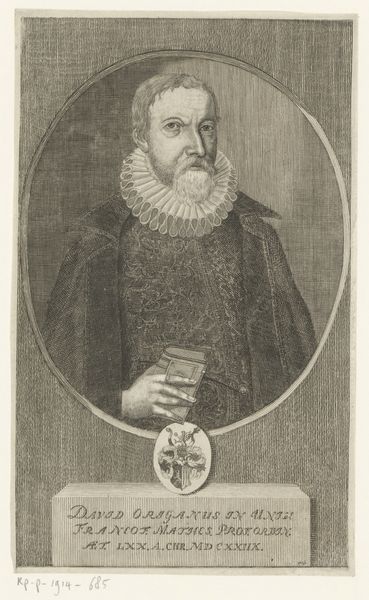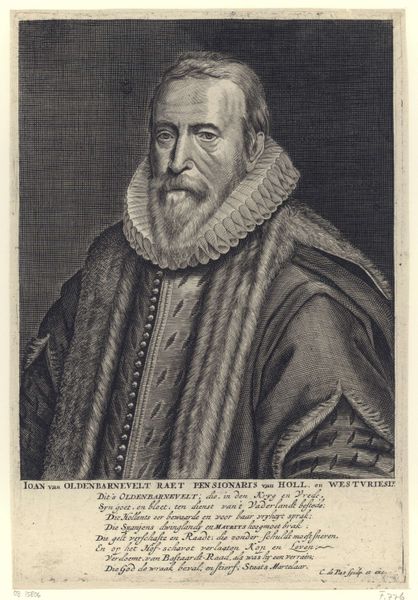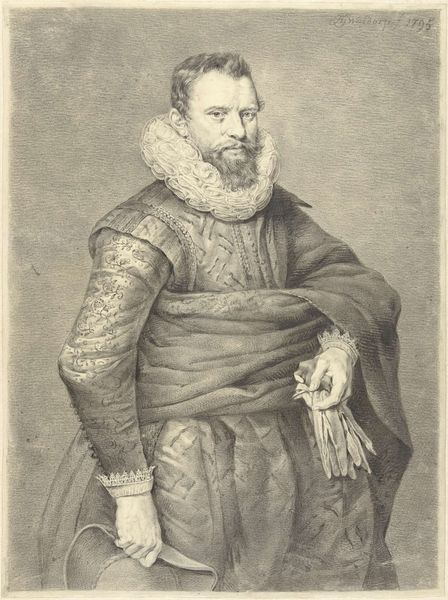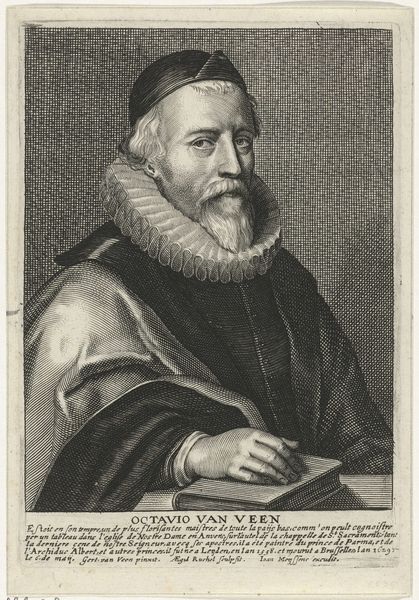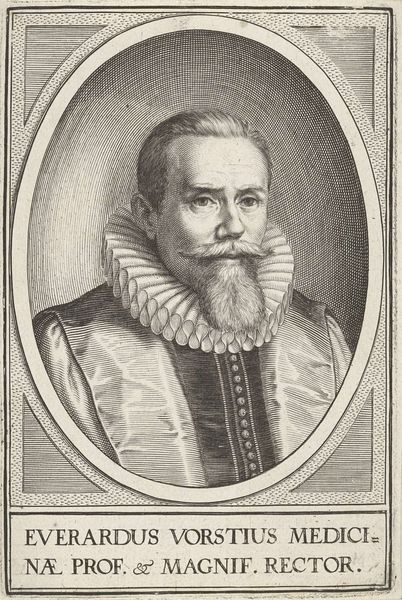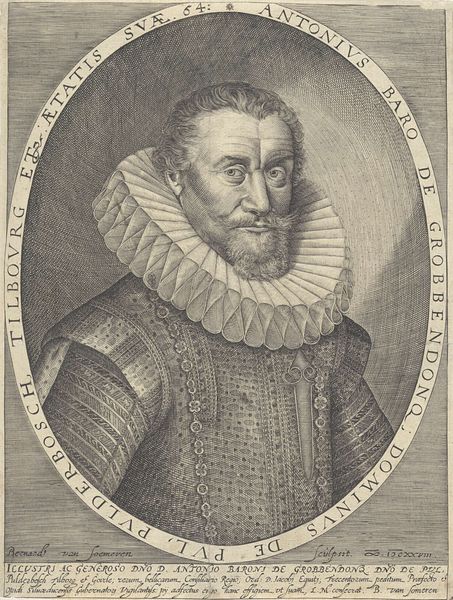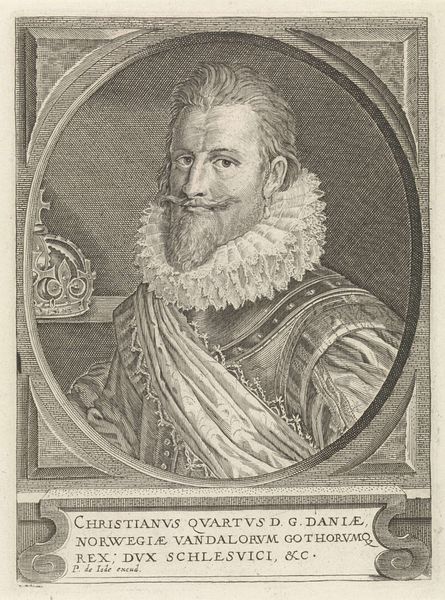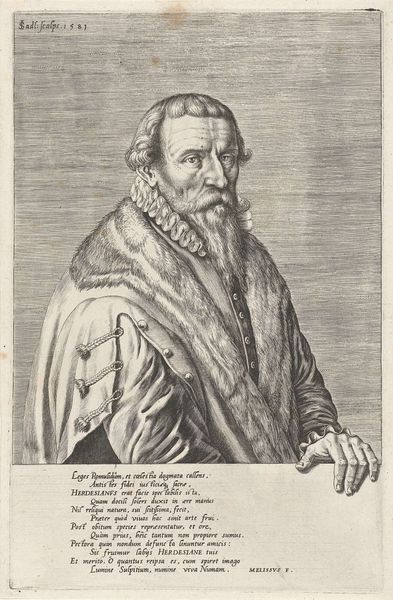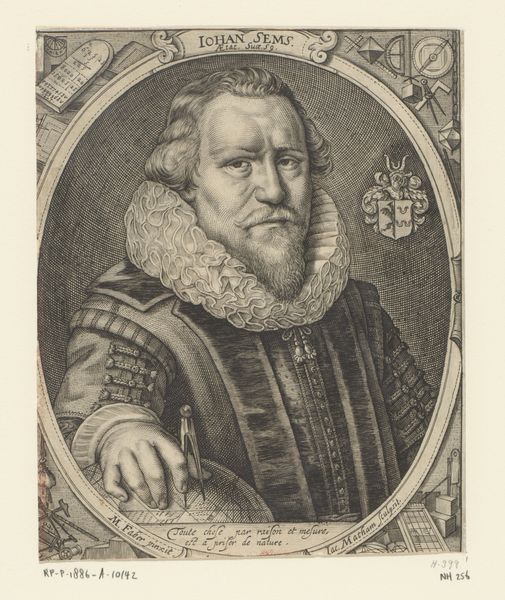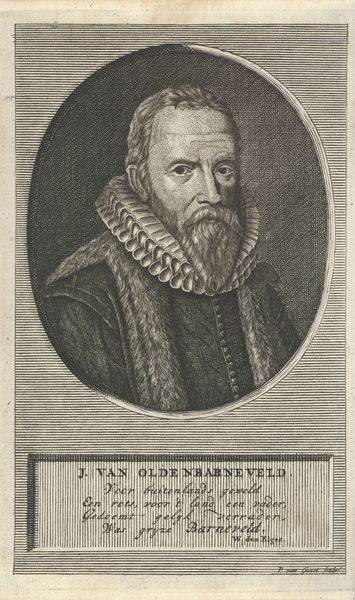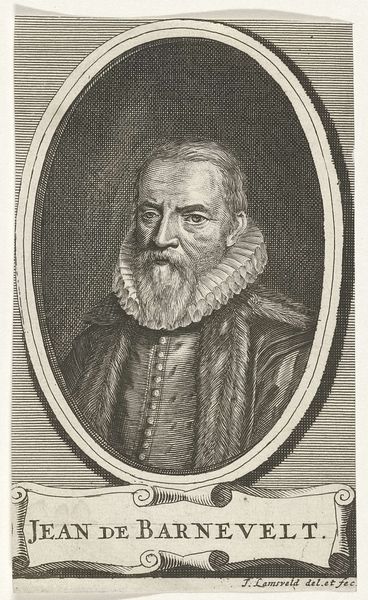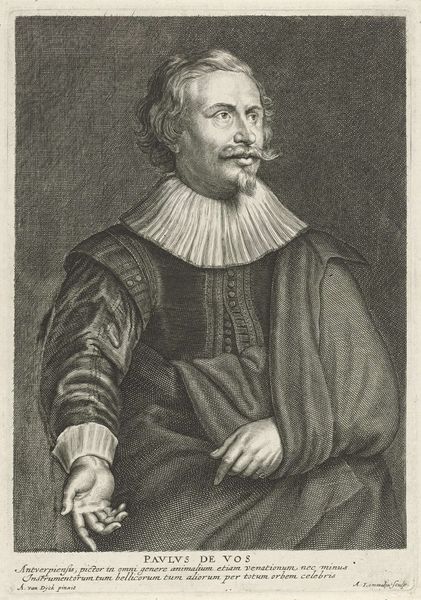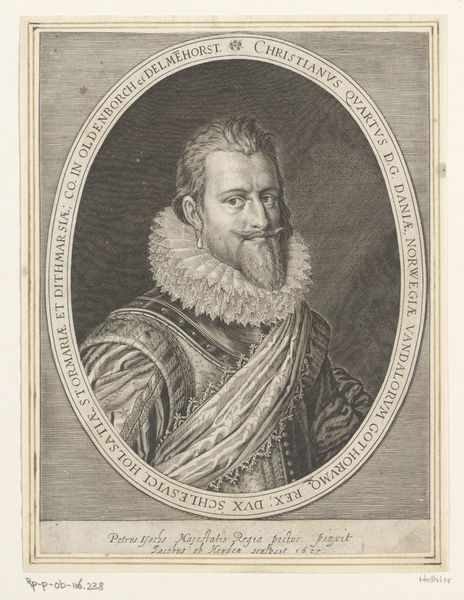
print, etching
#
portrait
# print
#
etching
#
portrait drawing
#
realism
Dimensions: height 113 mm, width 85 mm
Copyright: Rijks Museum: Open Domain
Curator: Here we have Diederik Jan Singendonck's "Portret van Johannes Wtenbogaert," a print crafted through etching and dating back to 1813. Editor: The first thing that strikes me is the intensity of his gaze, wouldn't you say? There's this unwavering scrutiny, but there's also a hint of kindness. His weathered face tells a story, and I’m immediately drawn to imagine what it could be. Curator: Absolutely. This work offers insight into the societal structure of the time and the role of portraiture. Wtenbogaert, given the fur-trimmed robe and elaborate ruff, occupied a certain standing, a position likely tied to influence or wealth. The piece also underscores the tradition of image-making as a means of documenting, commemorating, and perpetuating power. Editor: I can't help but marvel at the details—look at the textures rendered solely with lines. It makes you wonder about the artist's process, how long he must have stared at the sitter, building this likeness through painstaking effort. Curator: Realism was emerging as an important movement. One wonders about the degree of realism intended. Did Singendonck pursue an unvarnished truth, or did his vision adhere to the artistic customs expected in the subject's particular social context? Editor: The etching itself gives the artwork a fragile feel. Almost as though one wrong breath and poof! That history and social standing could simply just crumble away... Curator: That's a fascinating point. There is a delicacy here, especially considering the weight of history and societal implications the image carries. Perhaps it suggests even those in the most fortified social positions are also subject to impermanence. Editor: I think, too, about all the portraits that never get made. The stories that just vanish, traceless. That is rather a melancholy thought to end with, I admit, but these sorts of questions linger. Curator: True, and perhaps this portrait invites a broader investigation of whose likenesses were–and continue to be–memorialized, and more critically, whose stories remain absent.
Comments
No comments
Be the first to comment and join the conversation on the ultimate creative platform.
